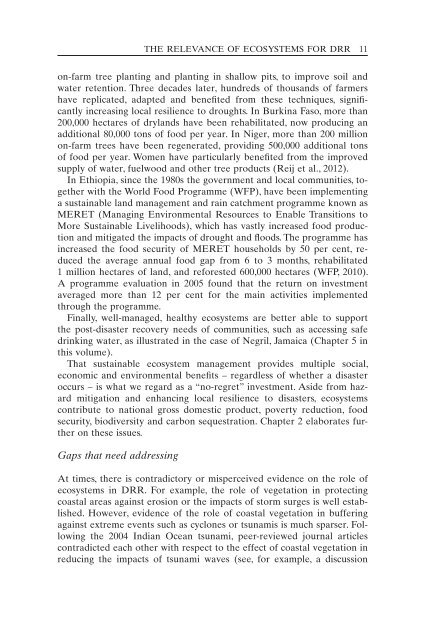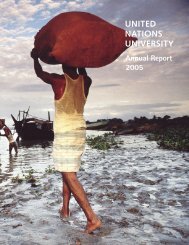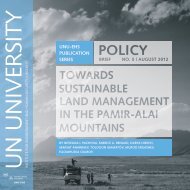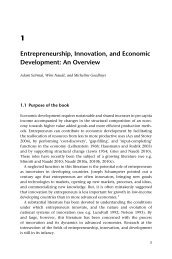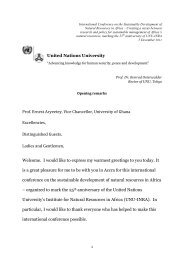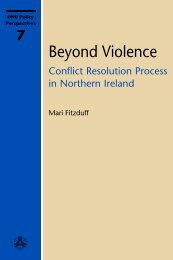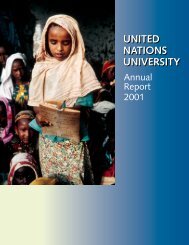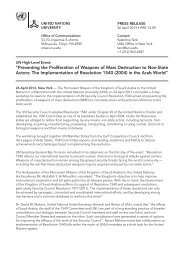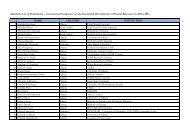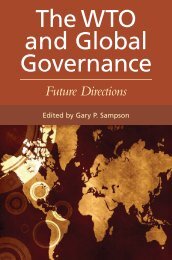Sample Chapter - United Nations University
Sample Chapter - United Nations University
Sample Chapter - United Nations University
You also want an ePaper? Increase the reach of your titles
YUMPU automatically turns print PDFs into web optimized ePapers that Google loves.
THE RELEVANCE OF ECOSYSTEMS FOR DRR 11<br />
on-farm tree planting and planting in shallow pits, to improve soil and<br />
water retention. Three decades later, hundreds of thousands of farmers<br />
have replicated, adapted and benefited from these techniques, significantly<br />
increasing local resilience to droughts. In Burkina Faso, more than<br />
200,000 hectares of drylands have been rehabilitated, now producing an<br />
additional 80,000 tons of food per year. In Niger, more than 200 million<br />
on-farm trees have been regenerated, providing 500,000 additional tons<br />
of food per year. Women have particularly benefited from the improved<br />
supply of water, fuelwood and other tree products (Reij et al., 2012).<br />
In Ethiopia, since the 1980s the government and local communities, together<br />
with the World Food Programme (WFP), have been implementing<br />
a sustainable land management and rain catchment programme known as<br />
MERET (Managing Environmental Resources to Enable Transitions to<br />
More Sustainable Livelihoods), which has vastly increased food production<br />
and mitigated the impacts of drought and floods. The programme has<br />
increased the food security of MERET households by 50 per cent, reduced<br />
the average annual food gap from 6 to 3 months, rehabilitated<br />
1 million hectares of land, and reforested 600,000 hectares (WFP, 2010).<br />
A programme evaluation in 2005 found that the return on investment<br />
averaged more than 12 per cent for the main activities implemented<br />
through the programme.<br />
Finally, well-managed, healthy ecosystems are better able to support<br />
the post-disaster recovery needs of communities, such as accessing safe<br />
drinking water, as illustrated in the case of Negril, Jamaica (<strong>Chapter</strong> 5 in<br />
this volume).<br />
That sustainable ecosystem management provides multiple social,<br />
economic and environmental benefits – regardless of whether a disaster<br />
occurs – is what we regard as a “no-regret” investment. Aside from hazard<br />
mitigation and enhancing local resilience to disasters, ecosystems<br />
contribute to national gross domestic product, poverty reduction, food<br />
security, biodiversity and carbon sequestration. <strong>Chapter</strong> 2 elaborates further<br />
on these issues.<br />
Gaps that need addressing<br />
At times, there is contradictory or misperceived evidence on the role of<br />
ecosystems in DRR. For example, the role of vegetation in protecting<br />
coastal areas against erosion or the impacts of storm surges is well established.<br />
However, evidence of the role of coastal vegetation in buffering<br />
against extreme events such as cyclones or tsunamis is much sparser. Following<br />
the 2004 Indian Ocean tsunami, peer-reviewed journal articles<br />
contradicted each other with respect to the effect of coastal vegetation in<br />
reducing the impacts of tsunami waves (see, for example, a discussion


